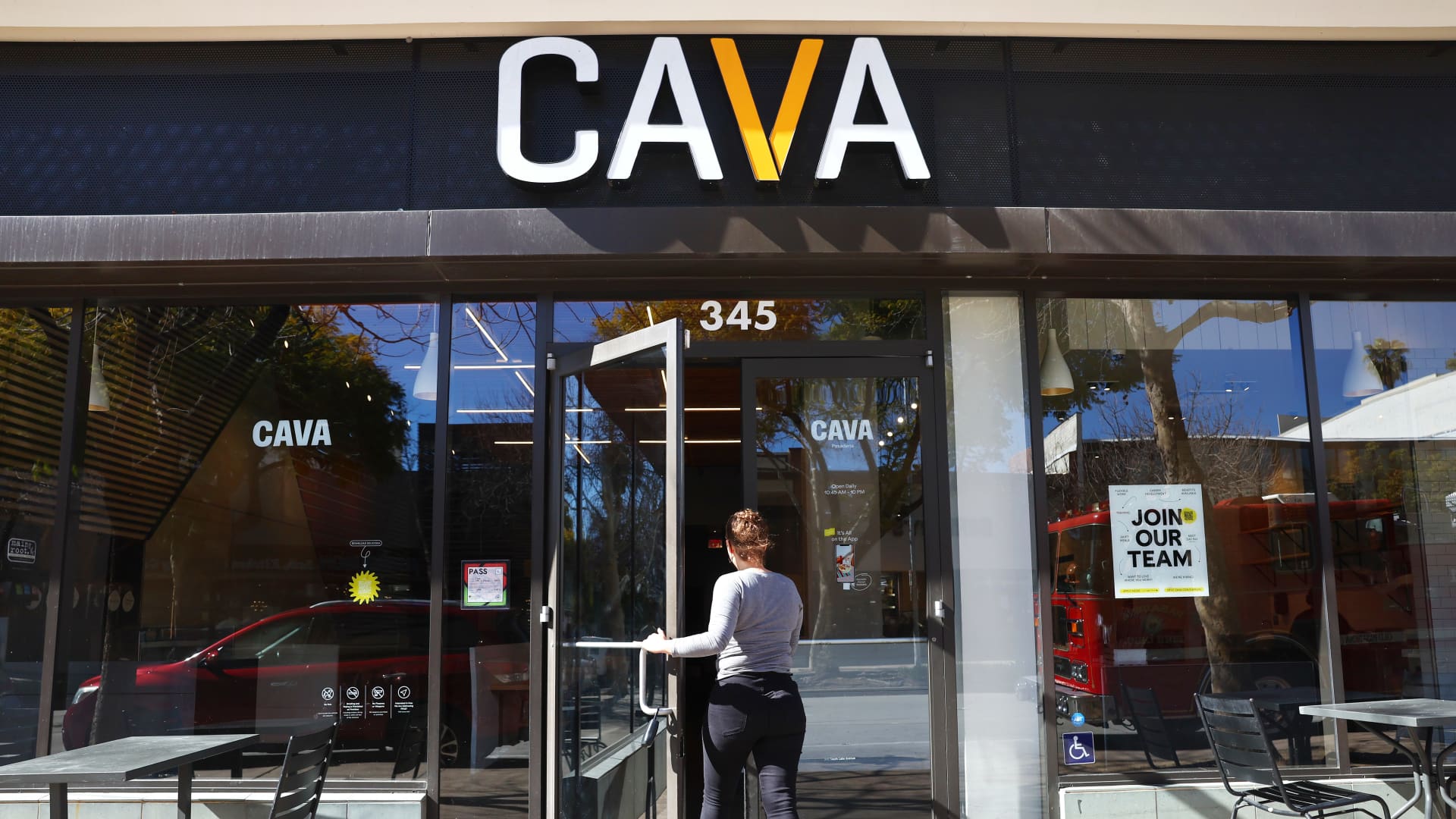A customer enters a Cava restaurant in Pasadena, California, on February 6, 2023.
Mario Tama | Getty Images News | Getty Images
The fast-casual chains Cava and Sweetgreen both reported a decrease in customers ordering delivery and an increase in customers picking up their own food, indicating that diners are becoming more cost-conscious.
By breaking the habit of ordering delivery, budget-conscious consumers can easily reduce their restaurant spending. Delivery orders tend to be more expensive due to additional fees and tips for the delivery drivers. In some cases, restaurants even increase the prices of the food itself to compensate for the high commission fees charged by third-party delivery services.
Choosing to pick up food for oneself is a simple way to save money. Unlike delivery orders, pickup orders typically do not come with additional fees. Although some customers may be prompted to leave a tip when picking up their food, fewer people actually do so compared to delivery orders. According to a Bankrate survey conducted in May 2023, only 13% of consumers said they left tips when picking up takeout orders.
However, delivery orders contribute significantly to restaurants’ revenue because the average receipt total is higher. A decrease in delivery transactions can negatively impact the overall revenue mix of these companies, which includes the combination of food, beverages, and fees.
Sweetgreen experienced weaker-than-expected sales in the second quarter due to the shift away from delivery, according to Chief Financial Officer Mitch Reback. The salad chain reported quarterly revenue of $152.5 million, falling short of Wall Street estimates of $156.7 million.
Although Cava’s second-quarter sales growth was not affected by the decline in delivery sales, the Mediterranean chain remains cautious about its full-year forecast. After achieving same-store sales growth of 28.4% in the first quarter and 18.2% in the second quarter, Cava anticipates a lower growth rate of 13% to 15% for the rest of the year. Cava CFO Tricia Tolivar mentioned on the company’s conference call that they have observed a slight shift from delivery to pickup and a moderation in overall same-store sales growth.
Cava executives also cited broader economic concerns, such as rising gas prices, as factors impacting their sales outlook.
Even Chipotle Mexican Grill, a major player in the fast-casual industry, is not immune to this shift. The burrito chain reported a 15.8% decrease in delivery service revenue to $17.3 million in late July. However, the delivery segment only accounted for less than 1% of Chipotle’s total revenue for the second quarter, and the company did not provide further details about its delivery business on its conference call.
Interestingly, the third-party companies responsible for restaurant deliveries have not experienced the same decline in demand. Uber reported a 14% increase in delivery sales for the second quarter, while DoorDash saw a 25% increase in total orders.
Only Just Eat Takeaway.com, the owner of Grubhub, reported a decrease in order volumes in North America for the first half of the year.
Denial of responsibility! VigourTimes is an automatic aggregator of Global media. In each content, the hyperlink to the primary source is specified. All trademarks belong to their rightful owners, and all materials to their authors. For any complaint, please reach us at – [email protected]. We will take necessary action within 24 hours.


